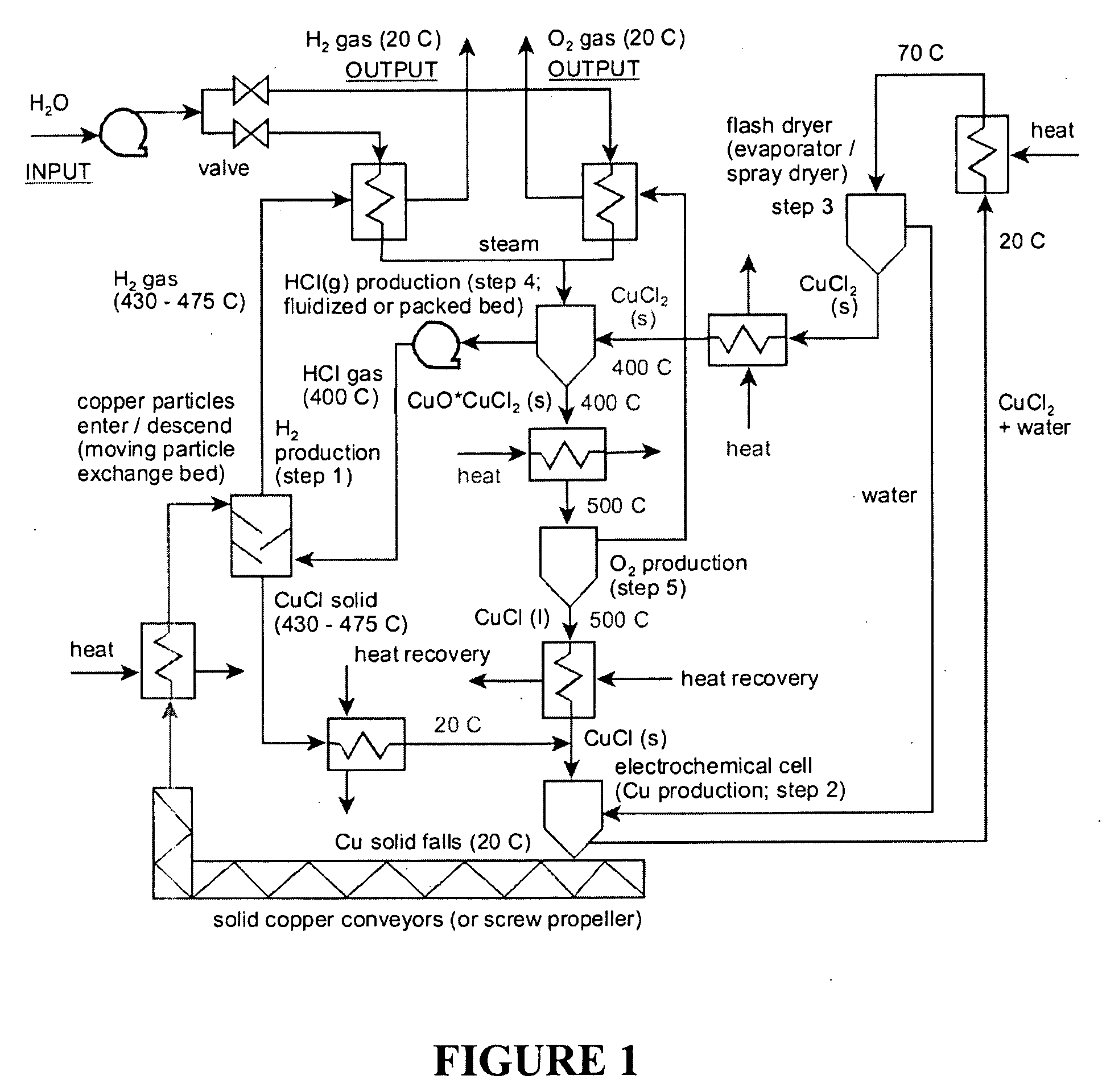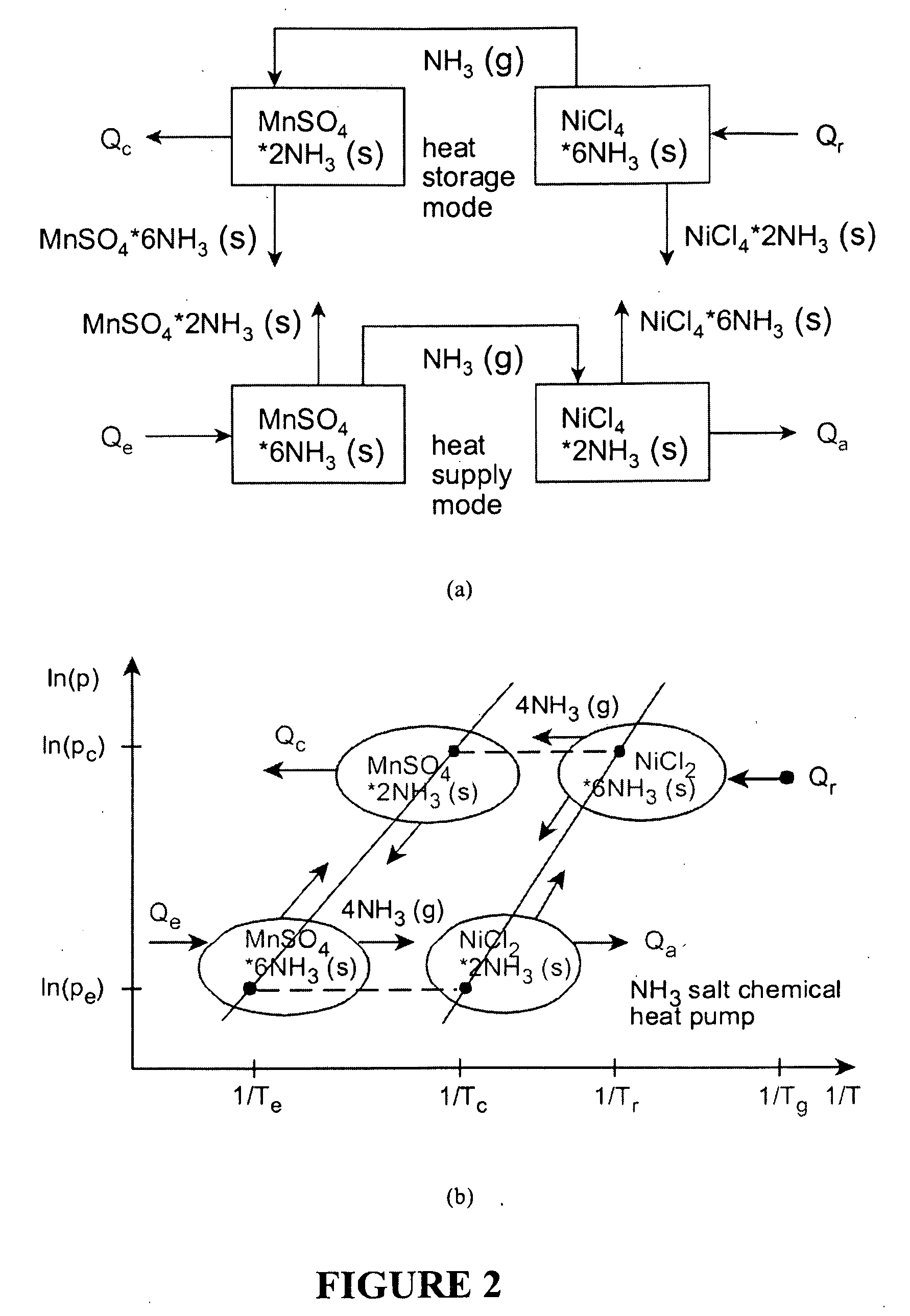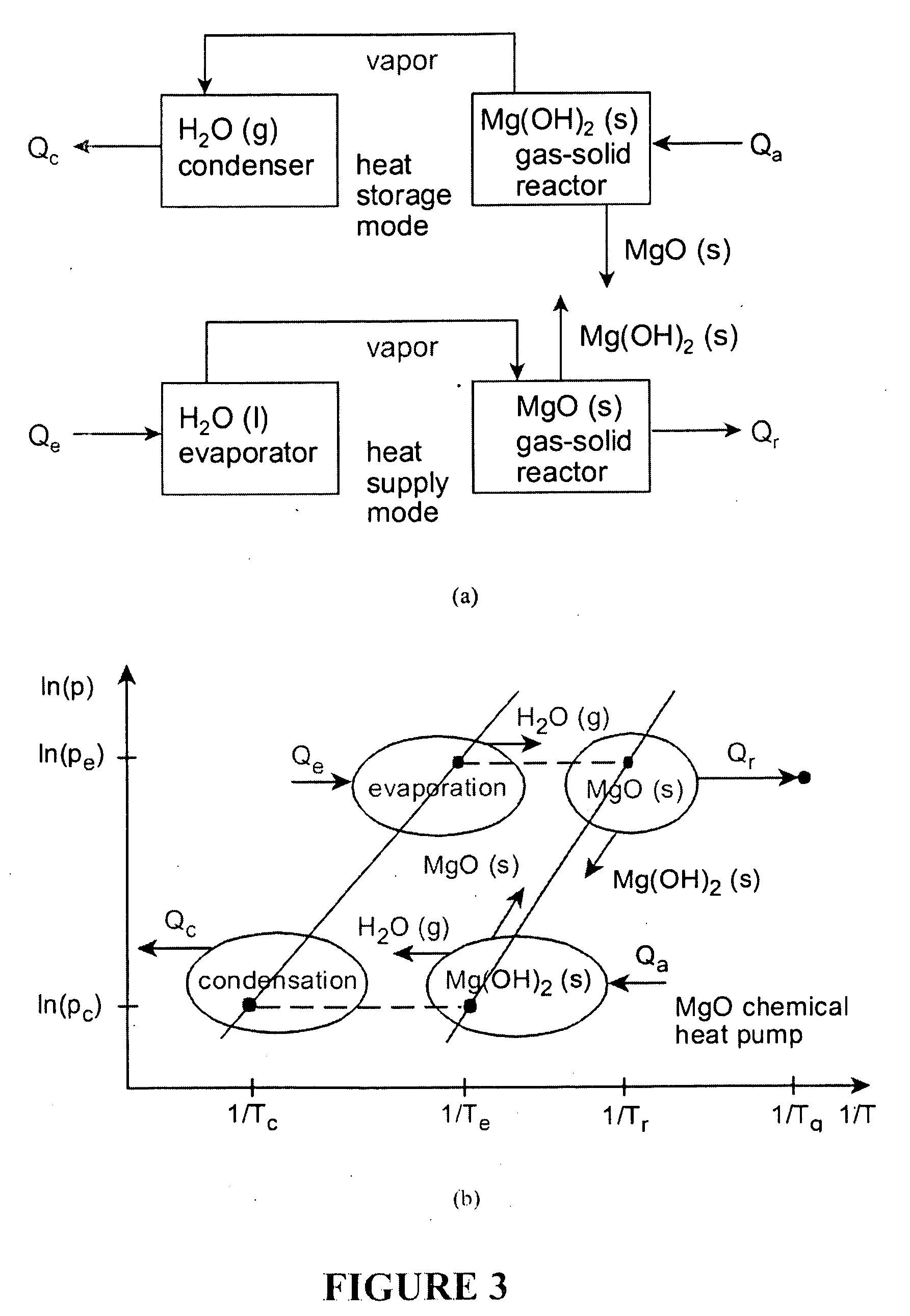Upgrading waste heat with heat pumps for thermochemical hydrogen production
- Summary
- Abstract
- Description
- Claims
- Application Information
AI Technical Summary
Benefits of technology
Problems solved by technology
Method used
Image
Examples
Embodiment Construction
[0009]Heat upgrading for a copper-chlorine (Cu—Cl) cycle is exemplified herein. This particular cycle has been identified by Atomic Energy of Canada Ltd. (AECL) at its Chalk River Laboratories (CRL) and the Argonne National Laboratory (ANL) as a promising cycle for thermochemical hydrogen production (Lewis M A, Miller, A. Lower temperature thermochemical hydrogen production, US Department of Energy, International Nuclear Energy Research Initiative, June 2004). Other cycles may also be employed. In the Cu—Cl cycle, water is decomposed into hydrogen and oxygen through intermediate Cu—Cl compounds. Past studies at AECL and the Argonne National Laboratory (ANL) have developed enabling technologies for the Cu—Cl thermochemical cycle, through an International Nuclear Energy Research Initiative (I-NERI), as reported by Lewis et al. (Lewis M A, Serban M, Basco J K. Hydrogen production at 550° C. using a low temperature thermochemical cycle. ANS / ENS Exposition, New Orleans, November 2003). T...
PUM
| Property | Measurement | Unit |
|---|---|---|
| temperature | aaaaa | aaaaa |
| temperatures | aaaaa | aaaaa |
| temperatures | aaaaa | aaaaa |
Abstract
Description
Claims
Application Information
 Login to View More
Login to View More - R&D
- Intellectual Property
- Life Sciences
- Materials
- Tech Scout
- Unparalleled Data Quality
- Higher Quality Content
- 60% Fewer Hallucinations
Browse by: Latest US Patents, China's latest patents, Technical Efficacy Thesaurus, Application Domain, Technology Topic, Popular Technical Reports.
© 2025 PatSnap. All rights reserved.Legal|Privacy policy|Modern Slavery Act Transparency Statement|Sitemap|About US| Contact US: help@patsnap.com



